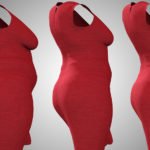Now that summer is upon us, it is the time to talk about sunscreen. You may be asking, “What is there to talk about? It’s a pretty straightforward process in that you apply it when you’re going to be at the beach or pool, or any time you’re going to be outdoors for a while.” The problem is that lots of us don’t actually use it correctly, new research suggests. Read on to find out what you might be doing wrong, and how to do a better job.
The study, which took place at the University of Minnesota Medical School in Minneapolis, found that there are a lot of mistakes made by sunscreen users and a large segment of people don’t use it at all.1 Wood, Megan; et al. “Observational study of free public sunscreen dispenser use at a major US outdoor event.” Journal of the American Academy of Dermatology. 16 May 2017. Accessed 21 May 2017. http://www.eblue.org/article/S0190-9622(17)30285-2/fulltext. The evidence was gathered at the Minnesota State Fair, held from late August through Labor Day in 2016. The investigators assembled several free sunscreen dispensers on the fairgrounds and took note of how fairgoers made use of them over a total of 93 hours.
Certain body parts were more of an issue than others when it came to the proper application of sunscreen. It is recommended that all exposed areas of skin should be covered by sunscreen before walking around outdoors, but just one-third of the subjects applied it to all necessary areas. There is the possibility that a portion had applied sunscreen at home prior to coming to the fair, but since the dispensers were free of charge, it seems likely at least some people would reapply.
The most common body part people seemed concerned to cover in sunscreen were their arms, where 51 percent of the people applied it. While you might think that it would occur to people to use sunscreen on their faces, only 42 percent actually did so. The worst areas for coverage were the exposed part of their chests, which only received sunscreen application among six percent of people, and their legs, which only were covered in sunscreen by an abysmal 3.6 percent of the people.
What’s more, the researchers noticed that far fewer people bothered to apply any sunscreen on overcast days. This is definitely not a safe practice, though, since up to 80 percent of UV rays may reach your skin even when the sky is full of clouds, according to the American Academy of Dermatology.
The bottom line is that we are all at risk for skin cancer, and it is no small problem. It is the presently most common form of cancer among Caucasians around the world, and a 2012 study at Salford Royal Hospital in the United Kingdom showed that it is on the rise.2Samarasinghe, Venura and Madan, Vishal. “Nonmelanoma Skin Cancer.” Journal of Cutaneous and Aesthetic Surgery. Jan-Mar 2012. Accessed 22 May 2017. http://www.ncbi.nlm.nih.gov/pmc/articles/PMC3339125/. Your risk is even higher if you have very fair skin, red hair, a family history of skin cancer, or were sunburned more than once as a child.
To protect yourself, it’s important to start wearing sunscreen. On the other hand, if you know you are only going to receive 10 or 15 minutes of sun exposure, you would be well advised to skip the sunscreen in favor of vitamin D production. It’s important to mention that vitamin D deficiency actually raises your risk of skin cancer. Along with vitamin D, the antioxidants found in green tea, resveratrol, turmeric, and lycopene all help protect skin cells from DNA damage caused by the sun. All of these, incidentally, are included in Jon Barron’s Ultimate Antioxidant formula.
For any exposure longer than 15 minutes at peak sun times, an SPF 30 or higher formula should be applied to every part of your body that isn’t covered by clothing. Plus, you not only need to pay attention to where you are applying your sunscreen, but the amount you use. Experts suggest using a full ounce of sunscreen to adequately cover all of your body parts that the sun may hit. And don’t forget to reapply. Sunscreen starts wearing off after approximately two hours, and even faster if you are swimming or perspiring from the heat or an activity.
You can also lower your chance of developing skin cancer by limiting your time in the sun between peak hours from 10a.m. to 3p.m., or sitting in the shade as much as possible when you’re outside. Wearing clothing to cover up more of your skin’s surface area helps too, but isn’t always realistic when the temperature is high. And wearing a hat is another technique that can make a difference, as long as you choose one with a wide brim. So, go stock up on sunscreen and a new hat or two and enjoy a great summer outdoors!
Note: when shopping for sunscreen, look for a brand that relies more on natural ingredients VS chemicals. One reason is that a number of ingredients used in most commercial brands are known endocrine disruptors, including: Octyl methoxycinnamate (OMC), Para-aminobenzoic acid (PABA), Octyl salicyclate, Phenylbenzimidazole, Octocrylene, Octisalate, Dioxybenzone, Menthyl anthranilate, Homosalate, Octinoxate, Cinoxate, and of course Parabens. But even more noteworthy is the fact that many chemicals used in sunscreens actually increase your risk of getting skin cancer. These include, among others, oxybenzone, synthetic fragrances, and retinyl palmitate (vitamin A).
References
| ↑1 | Wood, Megan; et al. “Observational study of free public sunscreen dispenser use at a major US outdoor event.” Journal of the American Academy of Dermatology. 16 May 2017. Accessed 21 May 2017. http://www.eblue.org/article/S0190-9622(17)30285-2/fulltext. |
|---|---|
| ↑2 | Samarasinghe, Venura and Madan, Vishal. “Nonmelanoma Skin Cancer.” Journal of Cutaneous and Aesthetic Surgery. Jan-Mar 2012. Accessed 22 May 2017. http://www.ncbi.nlm.nih.gov/pmc/articles/PMC3339125/. |











